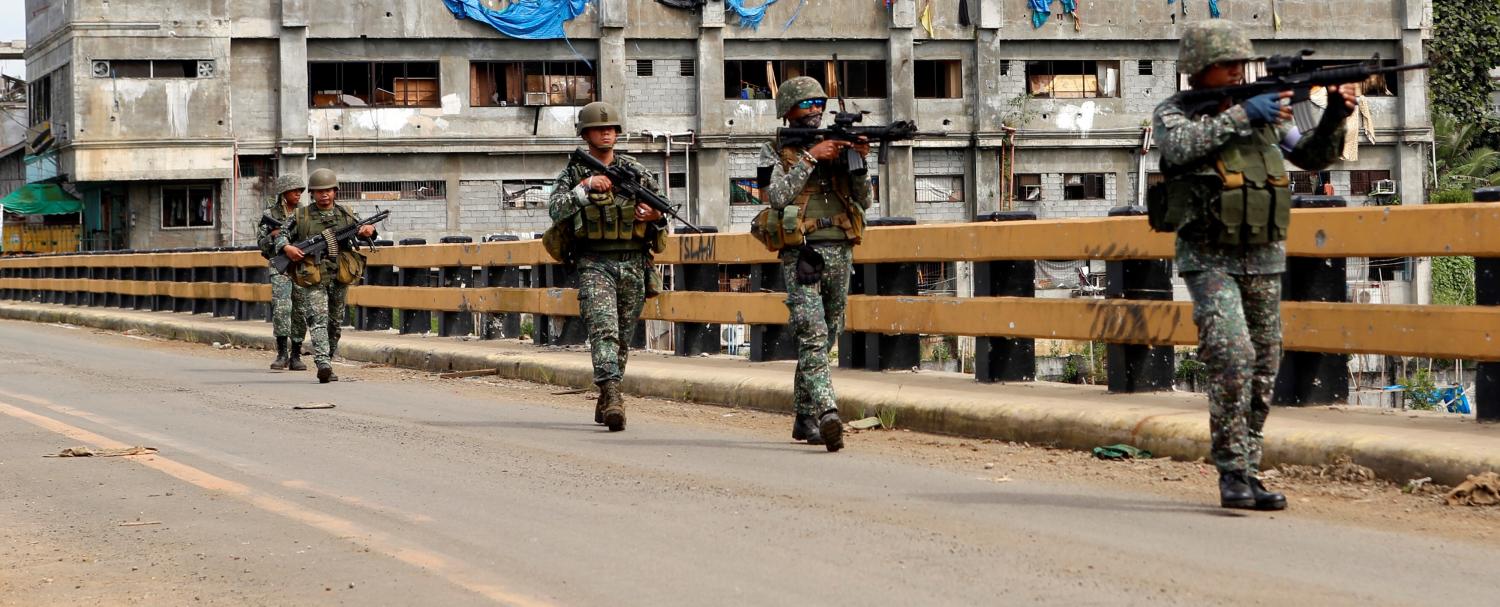Recent terrorism-related developments in the Philippines could lead to an increased security threat to Australians in parts of Southeast Asia, particularly Indonesia and Malaysia.
Earlier this year, ISIS had portrayed the Philippines as something of a success story to distract from its reverses elsewhere in the world. ISIS titled the tenth edition of its Rumiyah online magazine, released on 7 June, 'The Jihad in East Asia'. The group uses 'East Asia' to mean 'Southeast Asia' but in this case, despite the inclusive title, the article focused almost entirely on the Philippines.
In the magazine, ISIS claimed credit for the 1 June attack on the Resorts World Manila casino that caused 38 deaths, although Manila authorities have ruled out a terrorist motive (the attack was carried out by former public servant Jessie Javier Carlos, a debt-ridden problem gambler, who then committed suicide). It is, of course, not unusual for ISIS to claim attacks it had nothing to do with because it has nothing to lose by doing so.
Rumiyah’s focus on the Philippines also drew international attention to the fighting between the Armed Forces of the Philippines (AFP) and ISIS-affiliated fighters occupying the southern Philippines city of Marawi (population 300,000). The fighting began on 23 May 2017 during an AFP operation to capture Isnilon Hapilon, a leader of the notorious Abu Sayyaf Group who had pledged allegiance to ISIS in 2014 (an added incentive was the US$6.3 million reward being offered by the US for Hapilon’s death or capture). Hapilon was reported to be in Marawi to meet with the occupying Maute Group that had pledged allegiance to ISIS in 2015.
The AFP made heavy weather of retaking Marawi because it lacked experience and capability in urban warfare, and it faced stiff resistance from the well-entrenched militants. Rumiyah rejected any possibility of the militants ever negotiating with President Rodrigo Duterte, 'the Crusader taghut of the Philippines', stating that 'soldiers of the Khilafah...only negotiate with their enemies using bullets and bombs.'
The same edition of Rumiyah also contained a lengthy interview with Hapilon, referring to him as the 'Amir of the Soldiers of the Khilafah in East Asia' and identifying him as 'Shaykh Abu Abdillah al-Muhajir'. Hapilon said the pledges of allegiance to ISIS by different Muslim groups in the southern Philippines had given them common purpose and attracted fighters from Southeast Asia and beyond.
On 16 October, acting on information provided by a recovered hostage, the AFP was able to pinpoint the location in Marawi of Hapilon and Omarkhayam Maute, leader of the Maute Group, and kill them both. Also reported killed, on 19 October, was Malaysian Mahmud bin Ahmad, who had been financing ISIS-affiliated groups in Mindanao. The AFP says it is now in the final stages of securing Marawi.
Fighting through an urban area can be difficult, demoralising, and costly for any army. It was a particular challenge for the AFP in Marawi, where many houses have been built as defendable blockhouses with bunkers to protect the occupants from criminal gangs. The militants also seemed to have learned some lessons from fighting in Mosul, Iraq, using tunnels, pre-positioned munitions, an effective resupply system, IEDs, booby traps and drones to monitor AFP activity and collect propaganda material.
Government sources report 919 militants, 165 AFP soldiers/police, and 47 civilians killed*, though the militants-killed figure is probably inflated. The militants have now mostly melted back into the Lanao del Sur countryside around Marawi where they have local support, to reorganise themselves to fight another day.
While the killing of Hapilon and Omar Maute is a positive counter-terrorism development, the longer-term implications are less positive. It is likely that many more Muslim civilians were killed than acknowledged due to the AFP’s use of unguided bombs to take out small targets, causing considerable collateral damage, while the AFP operations will have driven ISIS-affiliated militant groups (the Maute Group, Abu Sayyaf Group, Bangsamoro Islamic Freedom Fighters and Ansar Khalifa Philippines) closer together and facilitated recruitment of new members.
One of the blowback effects of the reverses ISIS suffered on the ground in Iraq and Syria was revenge attacks against nationals of the countries fighting against it, which led to deadly mass casualty attacks against European members of the US-led coalition, particularly France and England.
If ISIS was to focus on who caused its latest problems in the Philippines, Australia would be well in the frame. The Australian government has been very public about its close defence relationship with the Philippines central government and provision of intelligence support for AFP operations against ISIS-linked groups in Mindanao.
It is doubtful that ISIS in the Philippines has much capability to project attacks into other parts of Southeast Asia, but it could call upon thousands of sympathisers in Indonesia and Malaysia to attack Australians there, and it could make it more dangerous for Australians to travel to resort locations like Bali.
* Figures updated at 4pm, 24/10.

